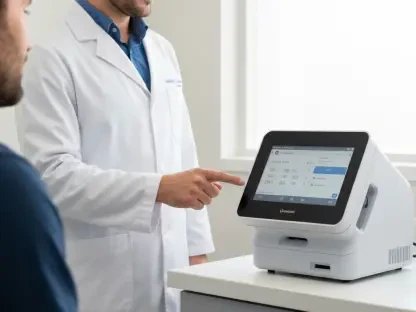As healthcare evolves in an era marked by technological innovation and patient-centric care models, dermatology telehealth has emerged as a transformative component within this dynamic landscape. This market is poised for substantial growth, driven by technological advancements, regulatory support, and shifting patient expectations. By blending digital platforms with traditional healthcare delivery, dermatology telehealth aims to address increasing demands for timely and accessible dermatologic care. As this field continues to expand, its implications reach far beyond simple convenience, potentially redefining how healthcare services are delivered and consumed.
Key Drivers of Market Growth
The Rising Demand for Efficient Dermatologic Care
The increasing prevalence of skin conditions such as acne, eczema, psoriasis, and skin cancer is driving a significant demand for efficient dermatologic care across the globe. Patients are increasingly seeking faster, more convenient access to healthcare providers, fueled by a desire for improved quality of life and better health outcomes. Dermatology telehealth offers a solution by breaking down geographical barriers and providing remote access to specialists, thereby accelerating diagnosis and treatment processes.
This shift towards digital healthcare aligns with the growing emphasis on preventive care, emphasizing early detection and management of conditions before they progress. For consumers, this means shorter wait times, reduced travel, and immediate access to expert care. For clinicians, it allows for more efficient patient triage, prioritizing those who need immediate in-person care and managing others remotely, thus optimizing resource allocation. As the telehealth sector continues to mature, further integration with existing healthcare infrastructure is essential for maintaining continuity and coherence in patient care.
Technological Integration and Innovation
The integration of advanced technologies within dermatology telehealth is a decisive factor in its growing adoption. Reliable high-resolution smartphone cameras and artificial intelligence-powered diagnostic tools enable accurate remote assessments of skin conditions. These tools, when coupled with cloud-based health data systems, significantly enhance the overall accuracy and efficiency of telehealth services. Moreover, the incorporation of Electronic Medical Records (EMR) into telehealth platforms not only streamlines workflows but also ensures the seamless exchange and access of patient data.
Artificial intelligence plays a pivotal role in elevating the diagnostic capabilities of telehealth platforms. Machine learning algorithms can analyze vast amounts of dermatological data, providing clinicians with insights and even predictive analytics to guide treatment decisions. This not only helps in reducing diagnostic errors but also enables a personalized approach to patient management, aligning with wider trends in medicine towards tailored treatment plans. As these technologies continue to evolve, their integration into telehealth services will likely become more sophisticated, offering new possibilities for patient engagement and interaction.
The Impact of the COVID-19 Pandemic
Accelerating the Adoption of Telemedicine
The COVID-19 pandemic played an instrumental role in accelerating the adoption of telemedicine, including in the field of dermatology. As in-person consultations became risky and often unavailable, both patients and providers turned to virtual platforms as a viable alternative. This pivot has reshaped the landscape of healthcare delivery, normalizing virtual interactions and demonstrating their potential to enhance healthcare access and quality.
This unprecedented shift to virtual consultations has revealed certain benefits, not least of which is the increased convenience for patients who can now seek medical advice and treatment from the comfort of their homes. Providers have also benefited from the ability to efficiently manage their workflows and accommodate more patients than might have been possible with traditional in-office visits. The new expectations around telehealth that have developed during the pandemic are likely here to stay, as both providers and patients recognize the value of maintaining flexible, remote interaction capabilities even as traditional options become viable again.
Policy and Reimbursement Models
The widespread adoption of telehealth solutions during the pandemic has been supported by policy changes and evolving reimbursement models. Governments worldwide have implemented various initiatives to facilitate remote consultations, reflecting a broader recognition of the role telehealth will play in future healthcare systems. These include altering reimbursement frameworks to incentivize telehealth services, often moving from the traditional fee-for-service model to more comprehensive, value-based care approaches.
Insurance reforms have further influenced telehealth adoption, as many payers have adjusted their policies to cover remote consultations similarly to in-person visits. This shift not only legitimizes telehealth practices but also encourages healthcare providers to expand their services. By supporting sustainable financial models, policymakers are enhancing the viability of telehealth solutions, ensuring their integration into mainstream medical practice. These policy changes are instrumental in shaping the telehealth market’s trajectory, with ongoing reforms expected to ease barriers and drive innovations in service delivery.
Market Segmentation and Regional Insights
Categorizing and Understanding the Market
The dermatology telehealth market is characterized by diverse segmentation strategies that reflect varying consumer demands and technological capabilities. Services are often categorized based on mechanisms of delivery, such as virtual consultations, real-time communication, and mobile health applications. Understanding these distinct segments is crucial for stakeholders aiming to maximize their reach and impact within this growing market.
Different technological mediums play specific roles. For instance, mobile health applications are pivotal in reaching younger demographics and providing continuous care management options. Meanwhile, real-time communication platforms enable more accurate and immediate patient-provider interactions, which are crucial for diagnosing acute conditions. This segmentation not only helps in identifying target markets but also guides the development of more specialized telehealth solutions. As consumer preferences evolve, service offerings must adapt accordingly, highlighting the importance of iterative innovation in maintaining competitive advantage.
Regional Market Leaders and Emerging Opportunities
The growth of the dermatology telehealth market is not uniform across regions, with distinct dynamics shaping progress. North America and Europe remain the frontrunners, boasting established healthcare infrastructures that facilitate telehealth adoption. These regions have embraced regulatory frameworks that support digital health initiatives, setting standards that other markets aspire to replicate.
Conversely, regions such as Asia-Pacific and other emerging markets present burgeoning opportunities despite infrastructural challenges. Digital transformation efforts in these regions focus on bridging gaps in healthcare accessibility, driven by burgeoning tech industries and increasing internet penetration rates. As these markets gain momentum, they present attractive opportunities for global telehealth companies looking to expand their presence. Companies able to navigate local regulations and cultural expectations are particularly well-positioned to capitalize on these growth prospects, leveraging innovation to meet diverse needs and propel the industry forward.
The Strategic Role of Industry Stakeholders
Business Collaborations and Technological Partnerships
As the dermatology telehealth market matures, strategic collaborations and partnerships among industry stakeholders are becoming prevalent. Companies from diverse sectors, including telehealth platforms, pharmaceutical firms, and health IT providers, are increasingly working together to deliver comprehensive solutions that address the complexities of modern healthcare needs. Through mergers, acquisitions, and joint ventures, these stakeholders aim to broaden their service offerings, improve technological capabilities, and extend their reach into new markets.
For instance, partnerships between telehealth providers and pharmaceutical companies can lead to seamless integration between digital consultations and medication delivery services. Health IT firms collaborate with telehealth platforms to fine-tune electronic medical record systems, ensuring smooth information flow and continuity of care. Industry stakeholders must remain agile and open to cross-sector cooperation to sustain growth and competitiveness. By sharing expertise and resources, companies can innovate more effectively and respond to the evolving demands of the healthcare landscape.
Innovation in Service Delivery and Patient Engagement
The evolution of dermatology telehealth is marked by a continuous quest for innovation in service delivery. Industry stakeholders are investing in cutting-edge technologies to enhance patient engagement and improve the quality of virtual care experiences. Telehealth platforms are increasingly incorporating features that go beyond basic consultations, such as secure messaging, remote monitoring, and interactive patient education tools.
To remain competitive, companies are exploring personalized care approaches that leverage patient data to tailor healthcare interventions. By analyzing health records, lifestyle information, and treatment histories, providers can deliver more targeted advice and recommendations. Gamification elements incorporated into telehealth applications encourage patient adherence to treatment plans by making healthcare management more interactive and enjoyable. These innovations elevate patient engagement to new heights, fostering a sense of empowerment and active participation in one’s own health journey.
Future Directions and Considerations
The growth of the dermatology telehealth market presents a myriad of future directions and considerations for stakeholders to navigate. As technology continues to evolve, so too must the frameworks that guide its use in healthcare. Regulatory compliance, cybersecurity, and data privacy concerns remain paramount, and stakeholders will need to collaborate closely to ensure patient safety and trust. Emphasizing robust regulatory frameworks protects patients’ sensitive information while promoting responsible innovation.
Moreover, the global potential of dermatology telehealth requires a nuanced approach to localization. Customizing tools and services to meet the specific cultural and infrastructural needs of different regions can expand market reach and improve patient outcomes. Furthermore, future research and development efforts must focus on improving the accuracy and reliability of diagnostic tools and enhancing interoperability among healthcare systems. By addressing these challenges, the dermatology telehealth industry can continue its trajectory of innovation and provide transformative solutions for patients and providers alike.
Conclusion: Charting a Course for Continued Innovation
In today’s rapidly advancing healthcare landscape, characterized by technological innovation and a focus on patient-centered care, dermatology telehealth has become an influential element. This sector is expected to experience significant growth due to technological progress, supportive regulations, and changing patient expectations. By integrating digital platforms with traditional healthcare, dermatology telehealth addresses the growing need for timely and accessible dermatological services. This expansion aims to offer more than just convenient care; it holds the potential to fundamentally alter how healthcare is delivered and accessed overall.
The increased use of telehealth in dermatology means that many patients can now consult with specialists without needing to visit a physical location. This not only saves time but also makes it easier for people in remote or underserved areas to receive quality care. Furthermore, the innovations in imaging and communication technology enhance the accuracy of diagnoses and treatments offered remotely. As the industry grows, it fosters a new era of healthcare delivery that emphasizes accessibility and immediacy, making quality dermatologic care available to a wider audience and setting a new benchmark for patient-centric care models.









